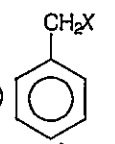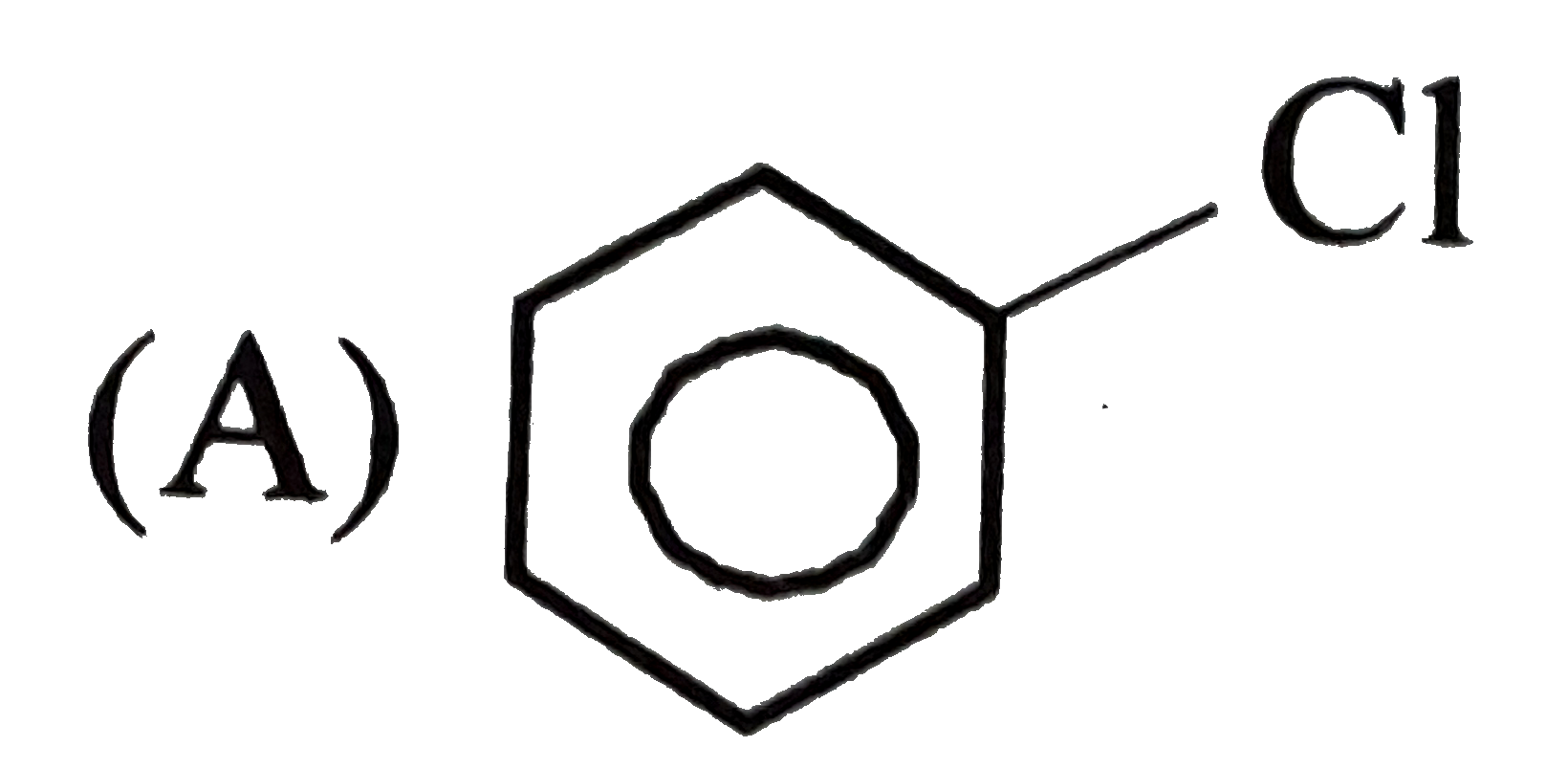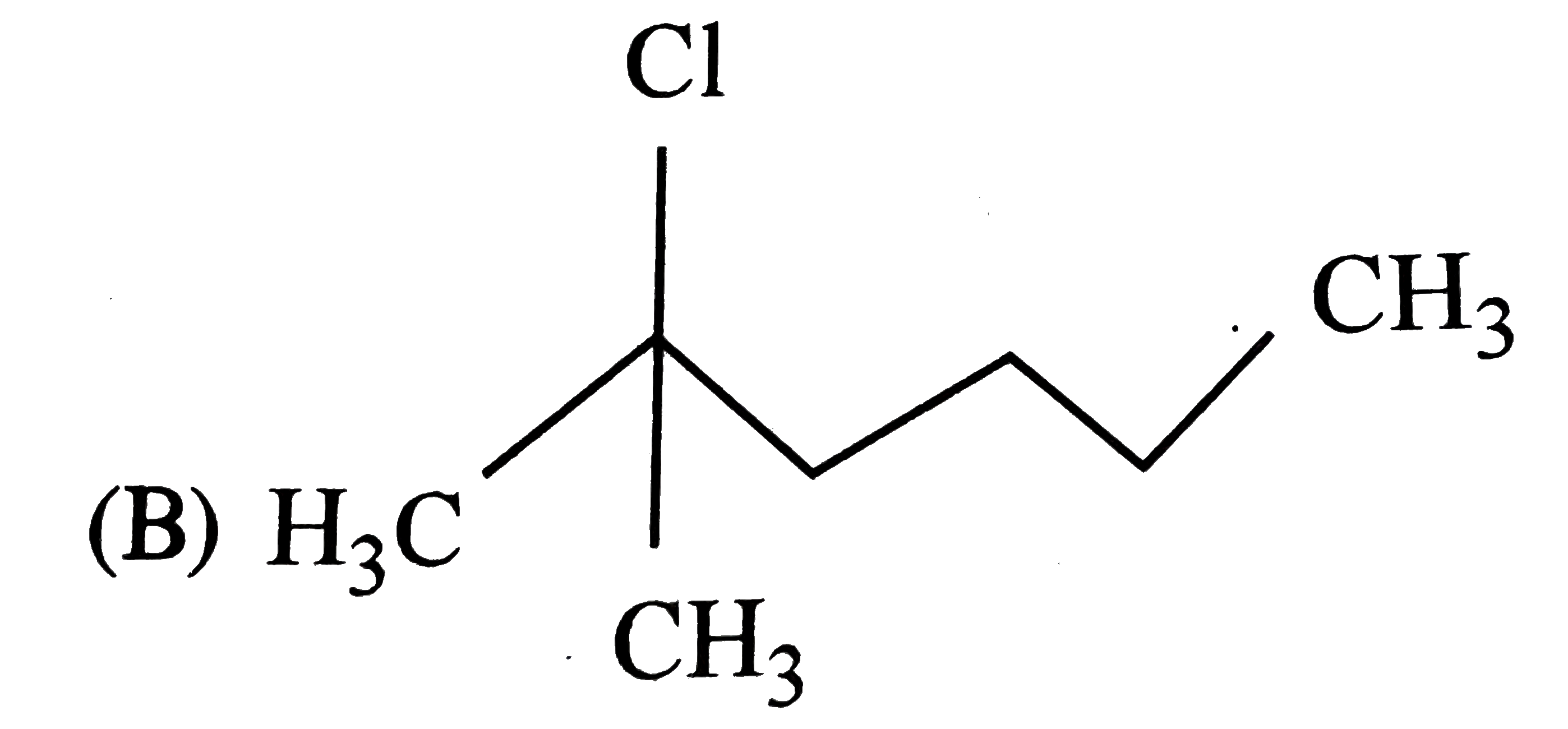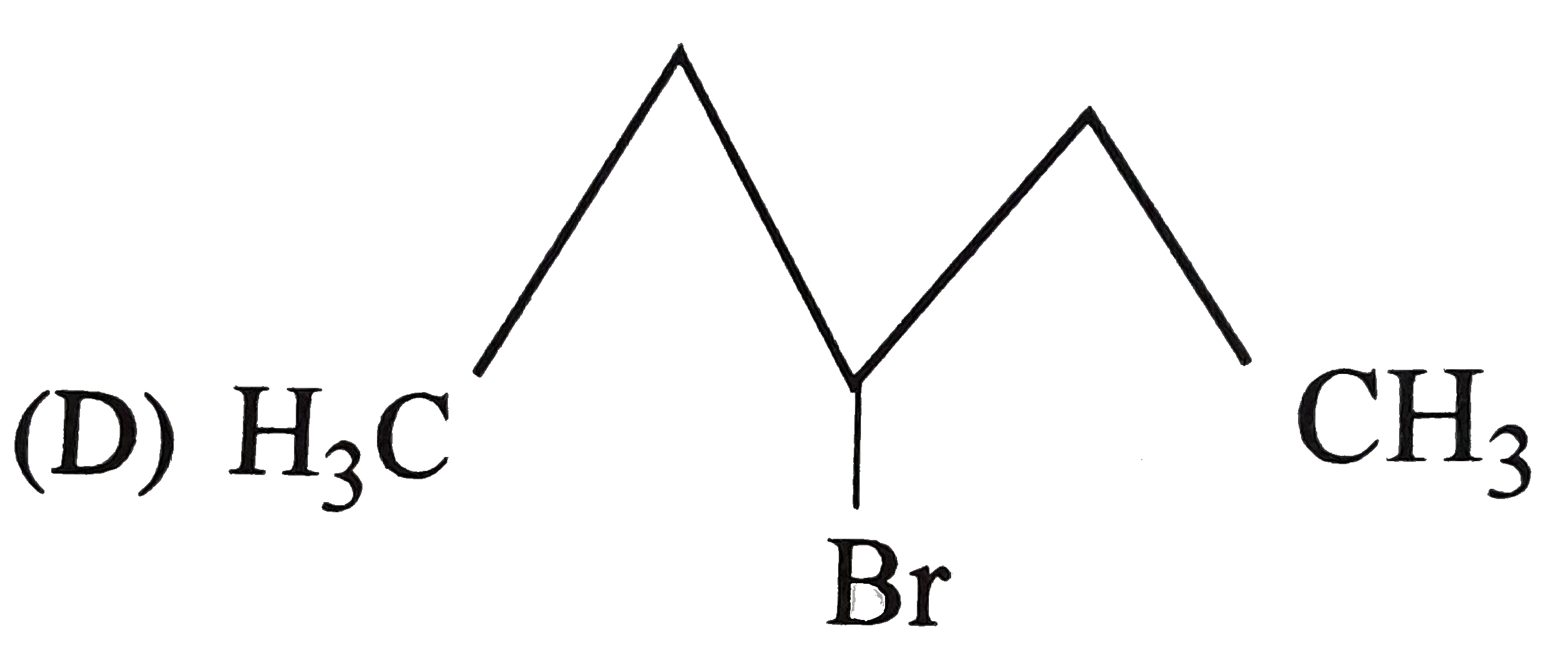Which of the following cannot show S_N1 reaction ?




The correct Answer is:C
To determine which of the given options cannot show an SN1 reaction, we need to analyze the stability of the carbocation intermediates formed during the reaction. The SN1 reaction mechanism involves the formation of a carbocation after the leaving group departs. The stability of this carbocation is crucial for the reaction to proceed.
1. Understanding SN1 Mechanism:
- The SN1 reaction involves two steps:
1. Formation of a carbocation after the leaving group departs.
2. Nucleophilic attack on the carbocation.
- The stability of the carbocation is key; more stable carbocations favor the SN1 mechanism.
2. Analyzing Each Option:
- Option 1: If the leaving group is attached to a tertiary carbon (3°), it forms a tertiary carbocation, which is stable. Therefore, this can undergo an SN1 reaction.
- Option 2: If the leaving group is attached to a secondary carbon (2°), it can form a secondary carbocation. While secondary carbocations are less stable than tertiary ones, they can still undergo SN1 reactions, especially if stabilized by resonance.
- Option 3: If the leaving group is attached to a carbon that, upon departure, forms a carbocation that is unstable (like a primary carbocation or one that forms a double bond), it cannot undergo SN1. For example, a primary carbocation is very unstable and will not favor the SN1 mechanism.
- Option 4: If the leaving group is attached to a carbon that forms a stable carbocation (like a tertiary or resonance-stabilized carbocation), it can undergo SN1.
3. Conclusion:
- The option that cannot show an SN1 reaction is the one that leads to an unstable carbocation. Based on the analysis, Option 3 is the correct answer, as it forms an unstable carbocation.
Final Answer:
Option 3 cannot show SN1 reaction.
- The SN1 reaction involves two steps:
1. Formation of a carbocation after the leaving group departs.
2. Nucleophilic attack on the carbocation.
- The stability of the carbocation is key; more stable carbocations favor the SN1 mechanism.
- Option 1: If the leaving group is attached to a tertiary carbon (3°), it forms a tertiary carbocation, which is stable. Therefore, this can undergo an SN1 reaction.
- Option 2: If the leaving group is attached to a secondary carbon (2°), it can form a secondary carbocation. While secondary carbocations are less stable than tertiary ones, they can still undergo SN1 reactions, especially if stabilized by resonance.
- Option 3: If the leaving group is attached to a carbon that, upon departure, forms a carbocation that is unstable (like a primary carbocation or one that forms a double bond), it cannot undergo SN1. For example, a primary carbocation is very unstable and will not favor the SN1 mechanism.
- Option 4: If the leaving group is attached to a carbon that forms a stable carbocation (like a tertiary or resonance-stabilized carbocation), it can undergo SN1.
- The option that cannot show an SN1 reaction is the one that leads to an unstable carbocation. Based on the analysis, Option 3 is the correct answer, as it forms an unstable carbocation.
Option 3 cannot show SN1 reaction.
Similar Questions
Knowledge Check
- Question 1 - Select One
Which of the following does not show SN2 reaction?
AVilnylic chalide >C=CH−XBAllyl chloride CH2=CH2ClCChlorobenzeneDAll of the above - Question 2 - Select One
Which of the following cannot undergo E2 reaction ? .
A .B
.B .C
.C .DNone of these
.DNone of these - Question 3 - Select One
Which of the following shows SN1 reaction most readily ?
A B
B C
C D
D
Which of the following cannot undergo E2 reaction ?
View SolutionWhich of the following is an SN2 reaction:-
View SolutionWhich of the following will not undergo S1N reaction with OH−
View SolutionWhich of the following cannot show geometrical isomerism?
View SolutionWhich of the following cannot show geometrical isomerism
View Solution
